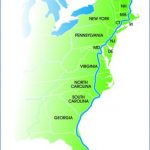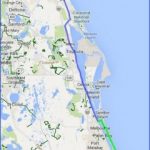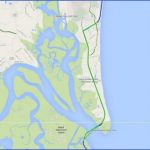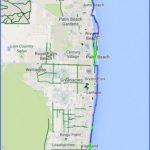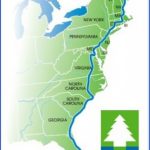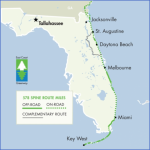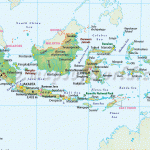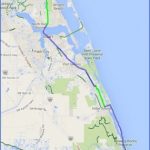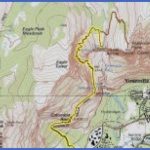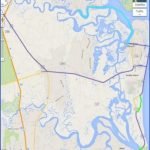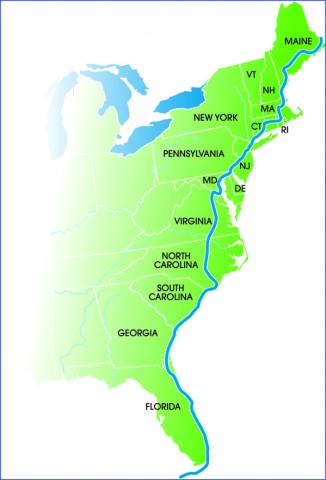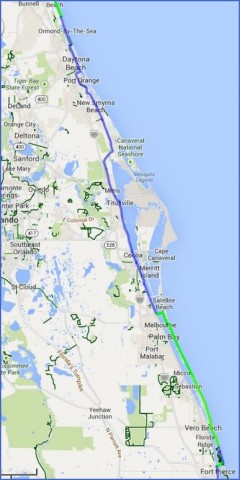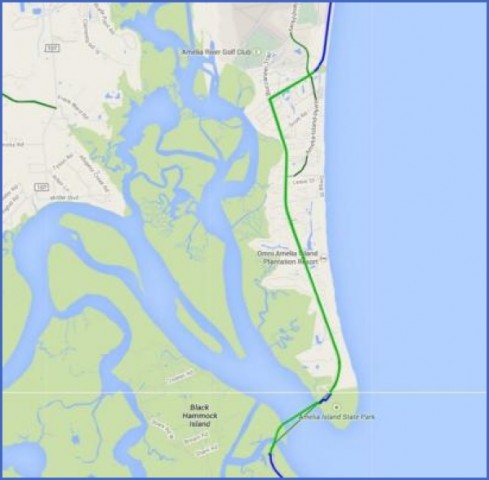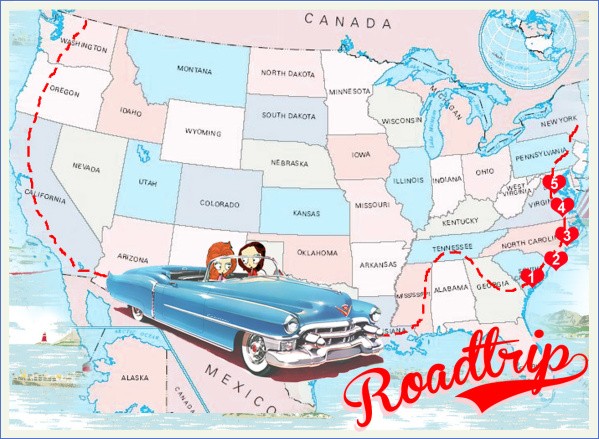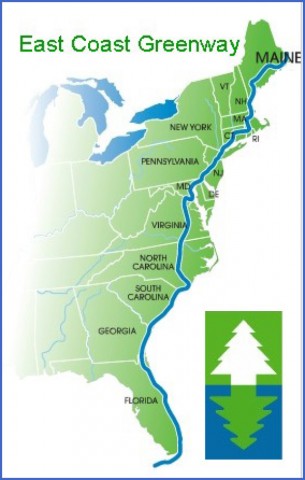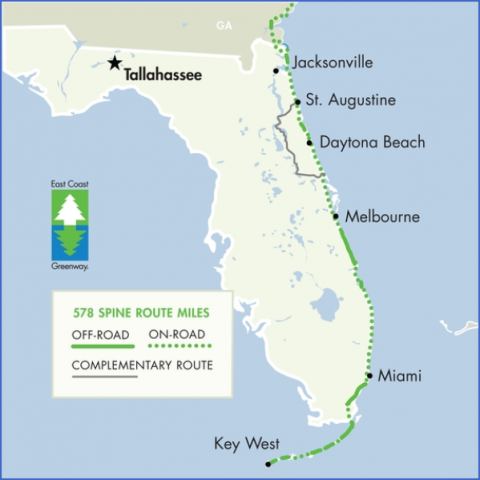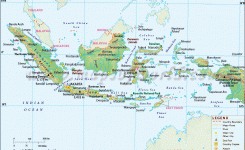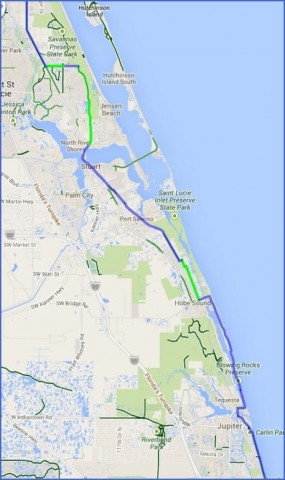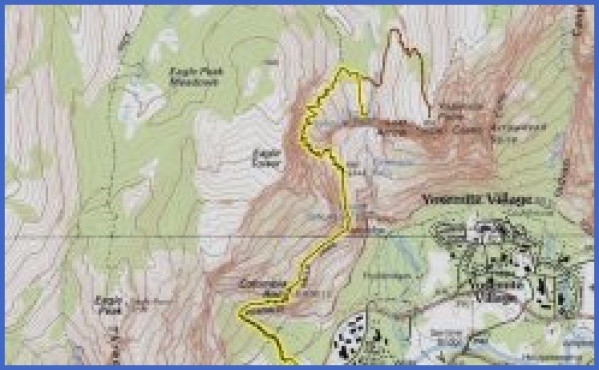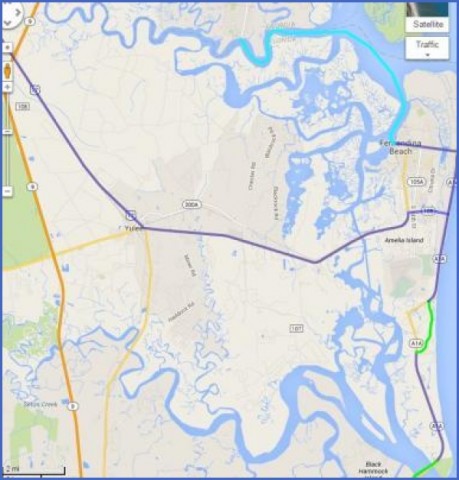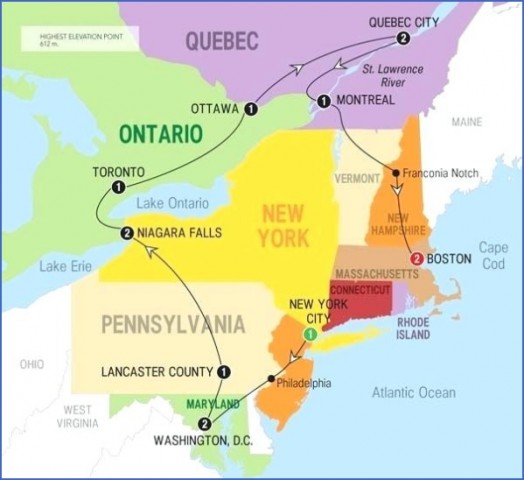The East Coast Greenway (ECG; www.greenway.org), begun in 1991, is one of the most ambitious bicycle route projects to date; the scope of the project is to link
2,900 miles of urban, suburban, and rural hiking and biking trails from the Canadian border in Maine to the Florida Keys. Similar in scope to the Appalachian T rail – but passing through dense population zones like Boston, New York, and Washington, D.C. – the ECG is largely funded by government grants earmarked for alternative transportation projects.
The first 370 miles of the Greenway (54 new or renovated paved trails – mostly in New England and the Mid-Atlantic) opened in 2003; the cost was $400 million. When finished the ECG will include direct links with 27 Amtrak stations. Total cost is estimated at $1.9 billion.
East Coast Greenway USA Photo Gallery
Approximately one-third of the trail is complete (off-road). The following are the 29 spine routes of the Greenway:
• Calais, ME • Portsmouth, NH
• Bangor, ME • Newburyport, MA
• Portland, ME • Boston, Ma
• Worcester, MA
• Providence, RI
• Hartford, CT
• New Haven, CT
• New York City, NY
• Jersey City, NJ
• Trenton, NJ
• Philadelphia, PA
• Wilmington, DE
• Baltimore, MD
• Annapolis, MD
• Washington, DC
Rails-to-Trails
The movement to convert abandoned railroads into recreational trails has been fostered by the largest national trails organization in the nation, the 150,000-member Rails-to-Trails Conservancy (www.railstotrails.org). Linking citizen advocacy with state and county projects, the effort has claimed over 20,000 miles of former rail beds for trails, with more than 9,000 miles of potential rail-trails waiting to be built.
Maybe You Like Them Too
- Top 10 Islands You Can Buy
- Top 10 Underrated Asian Cities 2023
- Top 10 Reasons Upsizing Will Be a Huge Travel Trend
- Top 10 Scuba Diving Destinations
- World’s 10 Best Places To Visit

